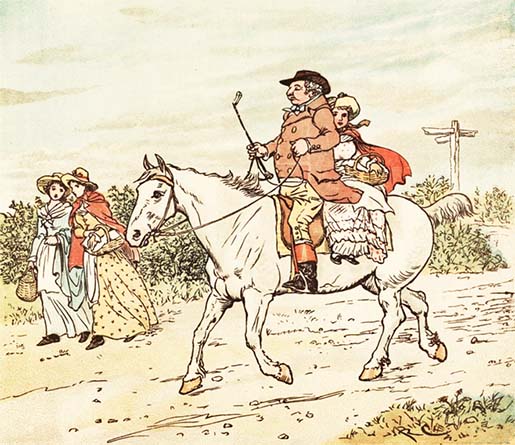A Farmer Went Trotting upon His Gray Mare
A farmer went trotting upon his gray mare,
Bumpety, bumpety, bump,
With his daughter behind him, so rosy and fair,
Lumpety, lumpety, lump.

Full Version
A farmer went trotting upon his gray mare,
Bumpety, bumpety, bump,
With his daughter behind him, so rosy and fair,
Lumpety, lumpety, lump.
A raven cried “Croak,” and they all tumbled down,
Bumpety, bumpety, bump;
The mare broke her knees and the farmer his crown,
Lumpety, lumpety, lump.
The mischievous raven flew laughing away,
Bumpety, bumpety, bump,
And vowed he would serve them the same next day,
Lumpety, lumpety, lump.
Origins
This rhyme first turned up in printed Mother Goose collections in the early 1900s, but it has the flavor of something older — the sort of chant parents and grandparents might have bounced children to long before it was ever written down.
Meaning
The repeating “bumpety, bumpety” lines capture the feeling of a horse’s uneven trot, which makes it easy to imagine how it worked in the nursery: words, rhythm, and movement all together.
The raven isn’t random, either. In old stories, ravens often show up as mischief-makers or tricksters. Here it’s not ominous — just noisy, cheeky, and happy to cause a little chaos before flying off with a laugh.
There’s no moral hiding in this rhyme. It’s a comic scene: a farmer and his daughter bouncing along happily until the raven interrupts, sending them into a tumble. The humor comes from the sudden change — from steady riding to a clumsy crash.
Children loved it because they could feel the rhythm and anticipate the “fall.” Parents turned it into play by bouncing kids on their knees for the “bumpety, bumpety” parts, then giving a quick dip or jolt when the fall came. The raven’s triumphant laugh made the whole thing end with a grin.


